Realtek showcased RTL8126, RTL8157, and RTL8251B 5 Gbps Ethernet solutions at Computex 2023, and the first Realtek RTL8126 5 Gbps Ethernet PCIe and M.2 adapters were introduced in 2024, shortly followed by RTL8157 5GbE USB 3.2 adapters.
The company has now unveiled upgraded solutions for 10 Gbps Ethernet networking at Computex 2025 with the RTL8127 10GbE PCIe controller and variants, the RTL8159 10GbE USB 3.2 Gen 2×2 controller, and the RTL8261C PHY for 10GbE switches.
Realtek RTL8127 10GbE PCIe NIC
Realtek RTL8127 specifications:
- Ethernet – 10Mps, 100Mps, 1000Mps, 2500Mps, 5000Mps, and 10Gbps
- Host interface – PCIe Gen4
- Features
- Modern standby
- Self loopback diagnostic
- Hardware ECC and CRC
- Power consumption – 1.95 Watts
- Package – 9×9 mm QFN88
The Realtek RTL8127 will be found in PCIe and M.2 cards, or directly soldered on motherboards or CPEs. The good news is the low power consumption, which should make cooling easier and cheaper (Realtek claims a $0.125 saving on heatsink) compared to competing 10GbE controllers.
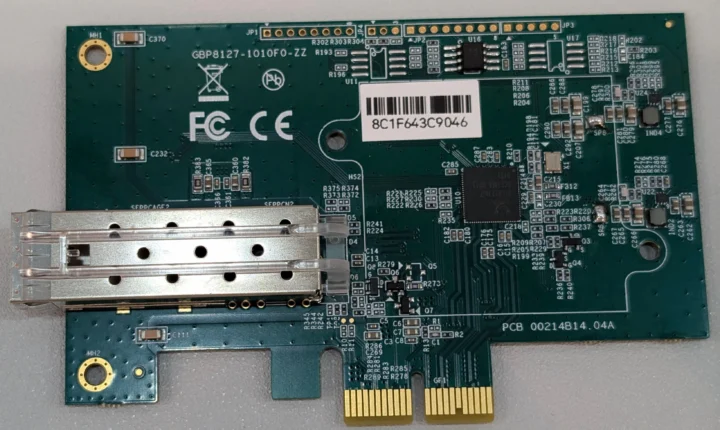
Three other variants will also be offered. The RTL8127AP targets servers with DASH 1.2 remote management technology support, the RTL8127ATF for FTTx (Fiber) only, without support for 10/100 Mbps speeds, and a low power consumption of about one Watt, and the RTL8127AT is similar to the former but without fiber support.
The RTL8127ATG and RTL8127AT support either PCIe Gen 3 x2 or PCIe Gen 4 x1 for better compatibility with older motherboards.
Realtek RTL8159 10 Gbps Ethernet USB 3.2 controller
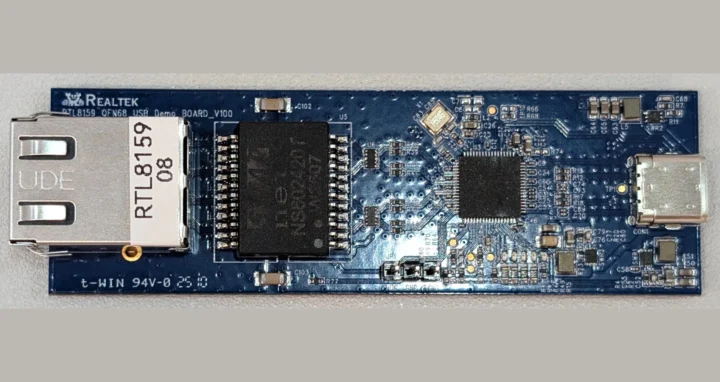
Realtek RTL8159 specifications:
- Ethernet – 10Mps, 100Mps, 1000Mps, 2500Mps, 5000Mps, and 10Gbps
- Host interface – USB 3.2 Gen2 x2
- Features
- CDC-NCM compatible
- UEFI PEX
- Hardware support for RSS
- MAC Address pass-through
- Power consumption – TBD
- Package – 8×8 mm QFN68

The RTL8159 will be integrated into USB Ethernet adapters, hub monitors, and USB docks.
RTL8261C PHY
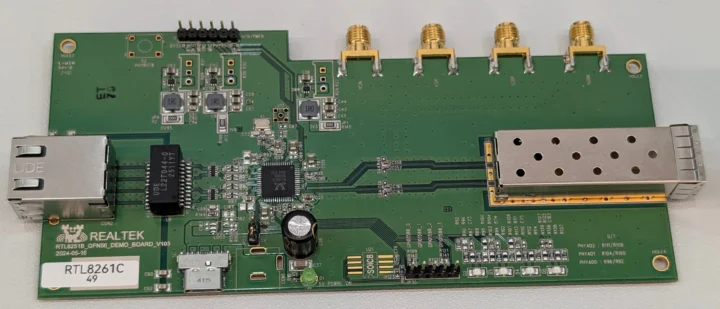
Realtek RTL8261C 10GbE single PHY specifications:
- Ethernet Speeds – 10GBase-T, 5000Base-T, 2500Base-T, 1000Base-T, 100Base-Tx, 10Base-Te
- Interfaces – USXGMII/SFI (XFI), 5000Base-X, 5000Base-R, 2500Base-X, 1000Base-X, HiSGMII/SGMII
- Co0lab 5GbE PHY RTL8251B and 2.5GbE PHY RTL8221BN
- Power Consumption – 1.65 Watts
- Package – 8×8 mm QFN56
- Industrial grade option – RTL8261CI
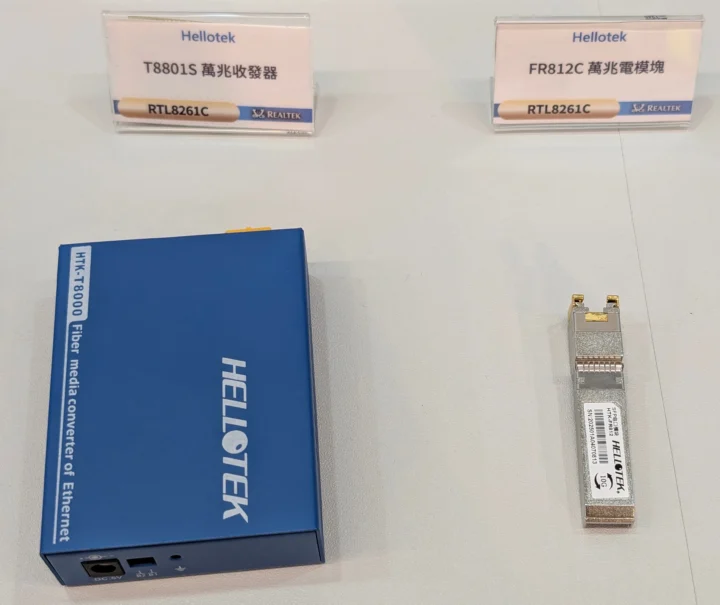
The RTL8261C will be used in 5G CPE, PON, WiFi 6/7 routers, switches, and cable modems.
Pricing
While Realtek did not directly disclose pricing information, TechPowerUp reported that a representative insinuated that the new 10 Gbps chips would be less than double the price of Realtek’s current 5 Gbps chips. Considering a Realtek RTL8126 5 Gbps Ethernet PCIe and M.2 cards can be purchased for around $15, we might end up with similar to RTL8127 cards going for $30 to $40. It’s the same story for RTL8157 5GbE USB 3.0 adapters at about $15. Several cards and motherboards based RTL8127 are expected by Q4 2025, but we will probably get more choices later in 2026.
Thanks to TLS for the photos.

Jean-Luc started CNX Software in 2010 as a part-time endeavor, before quitting his job as a software engineering manager, and starting to write daily news, and reviews full time later in 2011.
Support CNX Software! Donate via cryptocurrencies, become a Patron on Patreon, or purchase goods on Amazon or Aliexpress. We also use affiliate links in articles to earn commissions if you make a purchase after clicking on those links.


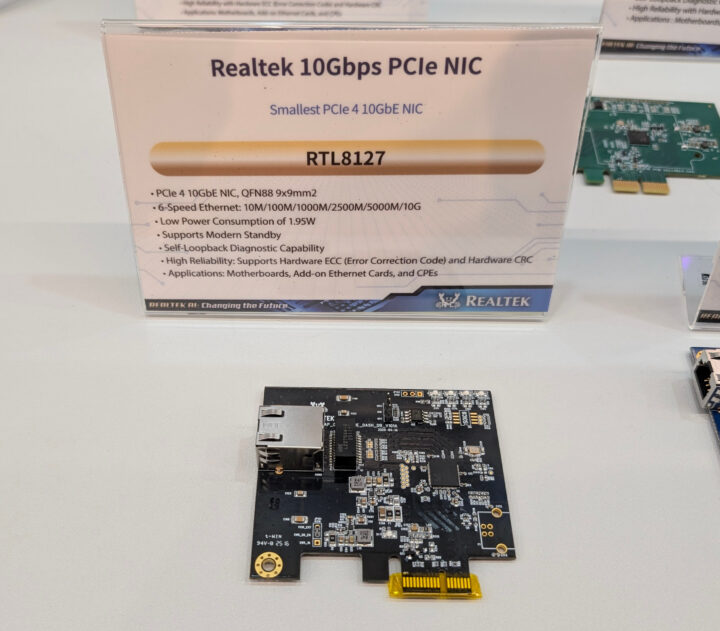
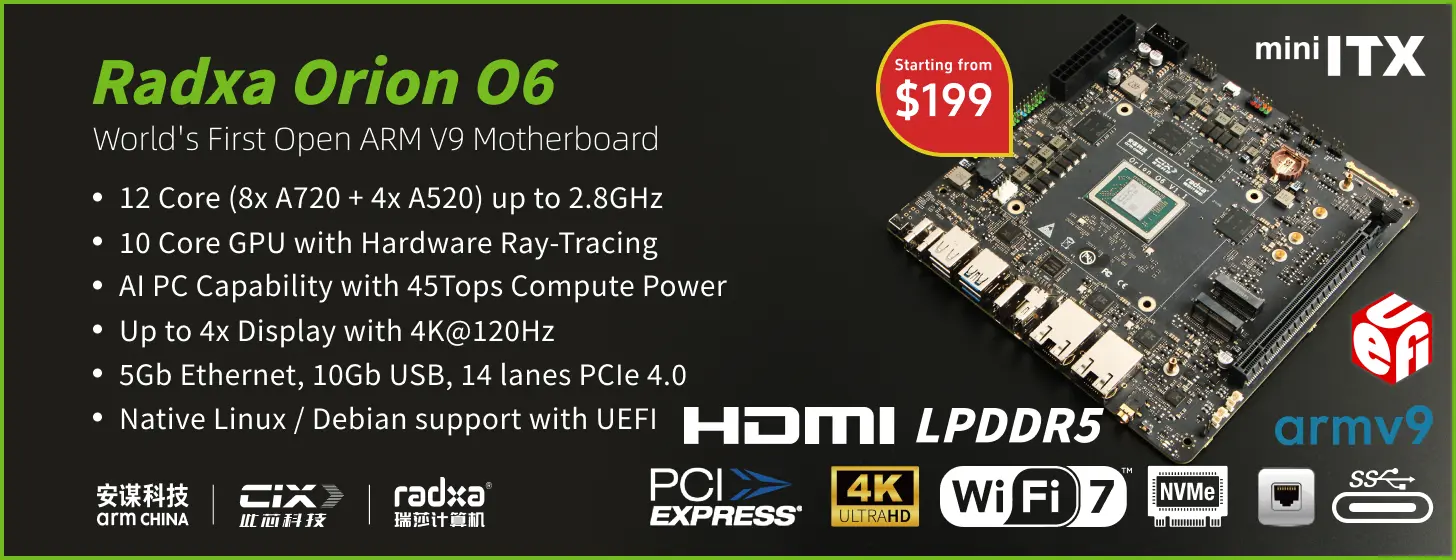


I wonder what the idle power consumption is like.